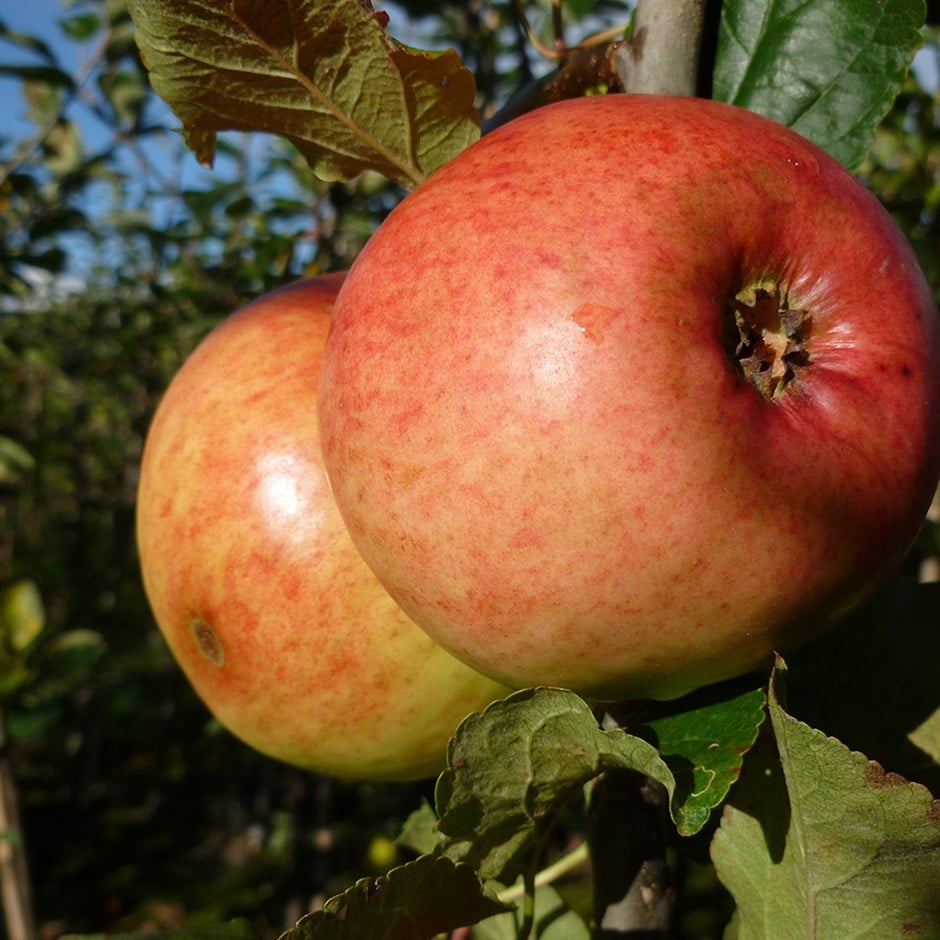apple 'Monarch'
cooking apple
This plant is deciduous so it will lose all its leaves in autumn, then fresh new foliage appears again each spring.
- Position: full sun
- Soil: moderately fertile, moist but well-drained soil
- Rate of growth: average
- Flowering period: April and May
- Hardiness: fully hardy
A late-season cooking apple with pale yellow skin, tinged with pink-red, and soft, white flesh. This vintage culinary apple, originating from Chelmsford, Essex in 1888, offers versatility. Harvested in October, it remains excellent for culinary use from November through to January, and as a substitute for ‘Bramley's Seedling’, it strikes a balance between tartness and acidity, requiring less additional sugar due to its natural sweetness. A reliable apple that is resistant to scab, ‘Monarch’ is an astute choice for cultivation in damper regions such as the West country.
Pollination information: This apple belongs to pollination group 3, and is partially self-fertile. To increase yields, it can be cross-pollinated with other apples in this group, or those from groups 2 or 4.
Pollination information: This apple belongs to pollination group 3, and is partially self-fertile. To increase yields, it can be cross-pollinated with other apples in this group, or those from groups 2 or 4.
When planting your apple tree, prepare a hole up to three times the diameter of its root system. Fork over the base of the pit in readiness, incorporating plenty of organic matter into the backfill and planting hole. Avoiding frozen and waterlogged soil, trees should be planted out as they arrive. If you've ordered a bare root tree, soak the roots in a bucket of water for half an hour prior to planting - or if this is not possible, they can be heeled in temporarily, covering their roots with soil, or potted up. Once in the ground, stake firmly and keep the base weed-free. Apply a balanced fertiliser in early spring to support growth and fruiting and provide regular watering during hot, dry spells. The main winter prune, avoiding frosty conditions, involves removing dead, dying, and diseased wood to create an open crown. Additionally, reduce leaders and laterals by a third to establish an airy structure without crisscrossing branches. In August, summer prune by shortening side shoots longer than 20cm (8”) back to three leaves, promoting fruit ripening and encouraging more fruit buds.

